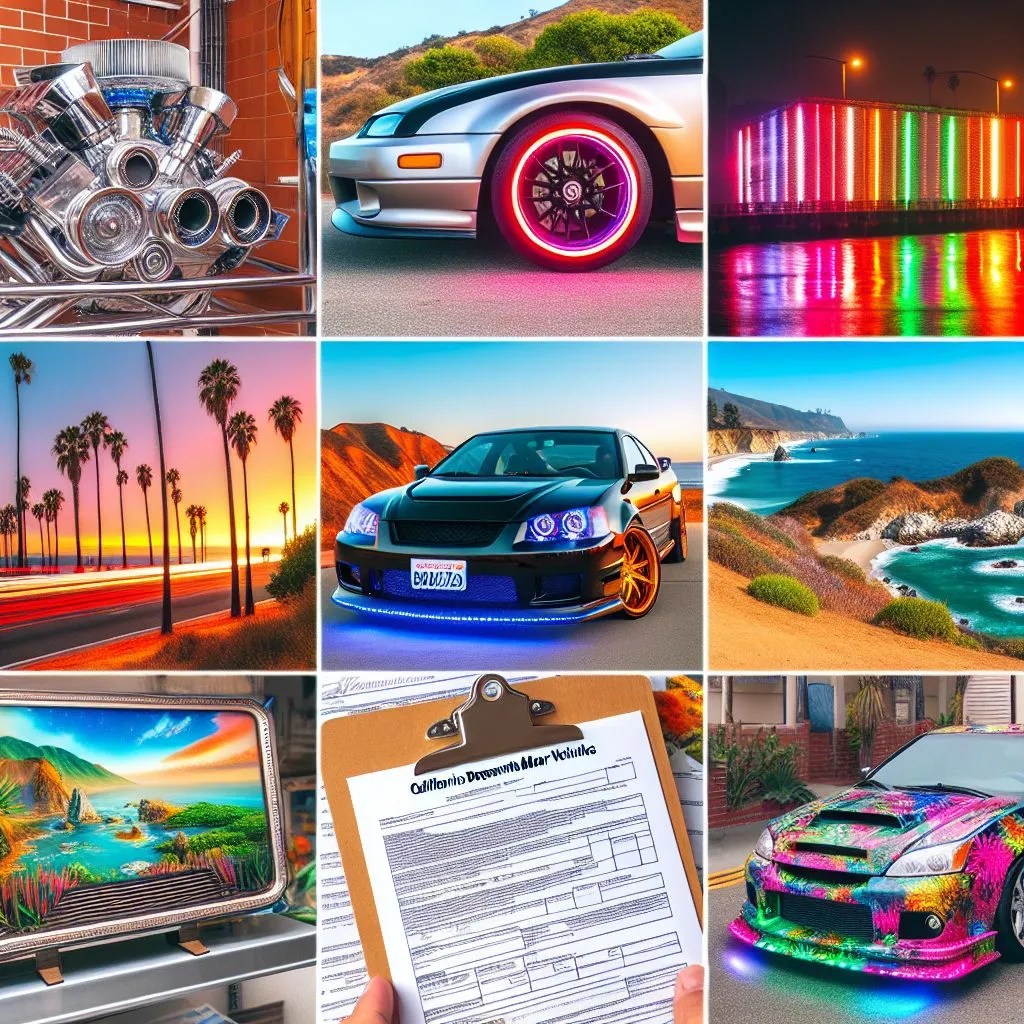
Key Takeaways
- Before changing your vehicle’s color in New Hampshire, you must notify the DMV and complete specific paperwork.
- Vehicle color change in New Hampshire requires evidence such as photos or a statement from the installer.
- Changing your vehicle’s color may have implications on your insurance policy, so it’s crucial to inform your insurer.
- There are visibility and reflectivity requirements for vehicle color changes to ensure safety and compliance with DMV standards.
- Failing to report a color change to the DMV can result in fines and complications with law enforcement.
DMV Regulations: Changing Vehicle Color Legally in New Hampshire
When you’re ready to switch up the look of your vehicle, it’s not as simple as picking a new color and heading to the paint shop. In New Hampshire, there are specific steps you need to take to ensure your vehicle’s new hue is on the right side of the law.
Required Paperwork
First things first, you’ve got to deal with paperwork. The New Hampshire DMV requires vehicle owners to complete a form notifying them of any color change. This form is essential because it updates the vehicle’s registration details, keeping everything legal and up-to-date.
Procedures
The procedure for changing your vehicle’s color includes gathering evidence of the change, such as before and after photos or a detailed receipt from the paint shop. This documentation is necessary when you submit your paperwork to the DMV, as it serves as proof of the change.
Step-by-Step Guide
Let’s break down the process so you can color your ride without hitting any red lights along the way.
Gather Your Materials
You’ll need to collect all the necessary materials before you start. This includes the color change form from the DMV, evidence of the color change, and payment for any applicable fees. Keeping these items organized will make the process smoother.
Notify the DMV: When and How
Now, you’re probably wondering when and how to notify the DMV. It’s pretty straightforward: as soon as the color change is complete, fill out the required form and submit it along with your evidence. You can usually do this by mail or in person at a DMV office. Don’t drag your feet on this step, because timely notification is key.
Legal Implications: Vehicle Color Changes & Insurance in New Hampshire
Most importantly, remember that changing your vehicle’s color isn’t just about aesthetics. It can have real implications for your insurance policy.
DMV vs. Insurance Rules
While the DMV wants to know about color changes for registration and legal reasons, your insurance company needs to be in the loop too. They might adjust your premiums based on the new color, especially if it’s considered high-risk or more likely to be involved in an accident.
Therefore, after you’ve notified the DMV, give your insurance agent a call. They’ll tell you if your insurance rates will change and update your policy accordingly. This step is crucial because if you’re ever in an accident and your vehicle’s color doesn’t match the description on your insurance policy, you could face a denied claim.
Ramifications of Unauthorized Changes
Besides that, if you skip out on telling the DMV or your insurance company about your snazzy new paint job, you could end up with a fine or even a citation if you’re pulled over. It’s not worth the risk, so make sure to follow the process to the letter.

Ensuring Compliance: DMV Standards for Color Changes in New Hampshire
Changing the color of your vehicle isn’t just about picking a shade you like; it also involves making sure you meet the DMV’s standards. These standards are in place to ensure that all vehicles on the road are easily identifiable and meet safety requirements.
Visibility & Reflectivity Requirements
In New Hampshire, your vehicle’s color change must meet certain visibility and reflectivity requirements. This means the color you choose should not impede the visibility of your vehicle on the road. For instance, extremely dark colors that make your car nearly invisible at night are a no-go.
Reflectivity is also important, particularly for commercial vehicles. If you’re adding reflective material during the color change, it must be applied in a way that enhances safety and complies with state regulations.
Documentation Needed
When you submit your color change paperwork to the DMV, make sure to include all required documentation. This typically includes:
- A completed color change form available from the DMV.
- Photographic evidence of your vehicle before and after the color change.
- A receipt or a detailed statement from the paint shop or individual who completed the work.
- Payment for any fees associated with the update to your vehicle’s registration.
This documentation records your compliance and helps prevent any misunderstandings or issues down the line.
Shades of the Law: DMV Regulations on Color Changes in New Hampshire
It’s essential to understand that not all colors and finishes are fair game regarding vehicle color changes in New Hampshire. There are regulations in place that restrict certain choices.
Restrictions on Colors & Finishes
While New Hampshire doesn’t have a list of banned colors, certain types of finishes are restricted. For example, colors or finishes that can be confused with emergency vehicles or law enforcement are not permitted. This is to avoid any confusion on the road that could lead to dangerous situations.
Compliance Tips
To ensure you’re in full compliance with New Hampshire’s DMV regulations, consider the following tips:
- Steer clear of finishes that resemble public service vehicles.
- Check with the DMV if you’re considering a unique or unconventional color or finish.
- Always keep a copy of your color change documentation in your vehicle.
Following these tips can help you avoid any legal issues related to your vehicle’s color change.
Insurance Adjustments: After Changing Vehicle Color in New Hampshire
Once you’ve navigated the DMV’s requirements, it’s time to consider how your vehicle’s new color might affect your insurance.
Impact on Premiums & Coverage
Some colors are statistically more likely to be involved in accidents, and insurance companies are aware of this. If you choose such a color, you might see an increase in your insurance premiums. On the flip side, if you select a color considered safer, you might not see any change in your rates.
Updating Insurance Policies
It’s critical to inform your insurance provider of the color change. Provide them with the same documentation you gave to the DMV. They’ll update your policy, ensuring that you’re fully covered in case of an accident or theft.
Remember, if your vehicle’s description doesn’t match your insurance records, you could be in for a headache if you ever need to file a claim.
New Hampshire Vehicle Color Change Process & Regulations Summary:
| Topic | Details |
|---|---|
| Required Paperwork | Complete the color change notification form provided by the DMV. |
| Documentation | Provide photos or a statement from the installer as proof of the color change. |
| Visibility Standards | Ensure the new color meets visibility and reflectivity requirements for safety. |
| Insurance Notification | Inform your insurance company of the color change to update your policy. |
| Legal Restrictions | Avoid colors or finishes that could be mistaken for emergency or law enforcement vehicles. |
Reference:
New Hampshire DMV

Frequently Asked Questions (FAQ) for New Hampshire Vehicle Color Change
What is the first step in changing my vehicle’s color in New Hampshire?
The first step is to complete the color change notification form available from the New Hampshire DMV. This form is required to update your vehicle’s registration with the new color information.
Next, you’ll need to gather evidence of the color change. This can be before and after photos or a detailed receipt from the company that performed the paint job. This documentation will need to be submitted along with the notification form.
Lastly, you’ll submit the form and evidence to the DMV, either by mail or in person. Make sure to keep copies for your records and for your insurance company.
What documents do I need to provide for a color change in New Hampshire?
When you notify the DMV of your vehicle’s color change, you’ll need to provide:
- The completed color change notification form.
- Photographic evidence of the color change, showing the vehicle before and after.
- A receipt or statement from the paint shop or individual who completed the work.
This documentation helps the DMV keep accurate records and ensures that your vehicle’s registration reflects the new color.
Do I need to inform my insurance company about my vehicle’s color change?
Yes, it’s very important to inform your insurance company about the color change. The color of your vehicle can affect your insurance premiums, as some colors are considered higher risk than others. For more information, you can refer to this guide on vehicle color change and insurance regulations.
Provide your insurance company with the same documentation you gave to the DMV. They will update your policy to reflect the new color, ensuring that you remain fully covered.
- Updating your policy can prevent claim denial in the event of an accident.
- Failure to inform your insurance company may lead to complications if the vehicle’s description doesn’t match the insurance records.
Keeping your insurance information updated is as crucial as the DMV notification.
Are there any restrictions on the colors I can choose for my vehicle in New Hampshire?
While New Hampshire does not ban specific colors, there are restrictions to keep in mind:
- Avoid colors that mimic emergency or law enforcement vehicles to prevent confusion on the road.
- Ensure the color you choose does not impede the visibility of your vehicle, especially at night.
Choosing a legally compliant color will help you avoid any legal issues and ensure the safety of all road users.
What are the consequences of not reporting a color change to the New Hampshire DMV?
If you don’t report a color change to the New Hampshire DMV, you could face several consequences:
Firstly, you may receive a fine for not updating your vehicle’s registration information. The DMV needs to have accurate records for identification and law enforcement purposes.
Secondly, if you’re stopped by the police and the color of your vehicle doesn’t match the registration details, you could be subject to further penalties or even have your vehicle impounded.
Lastly, any discrepancy between your vehicle’s color and the registration can affect your insurance coverage in the event of an accident.
Therefore, it’s in your best interest to report any color changes as soon as possible to avoid these potential problems.





Leave a Reply